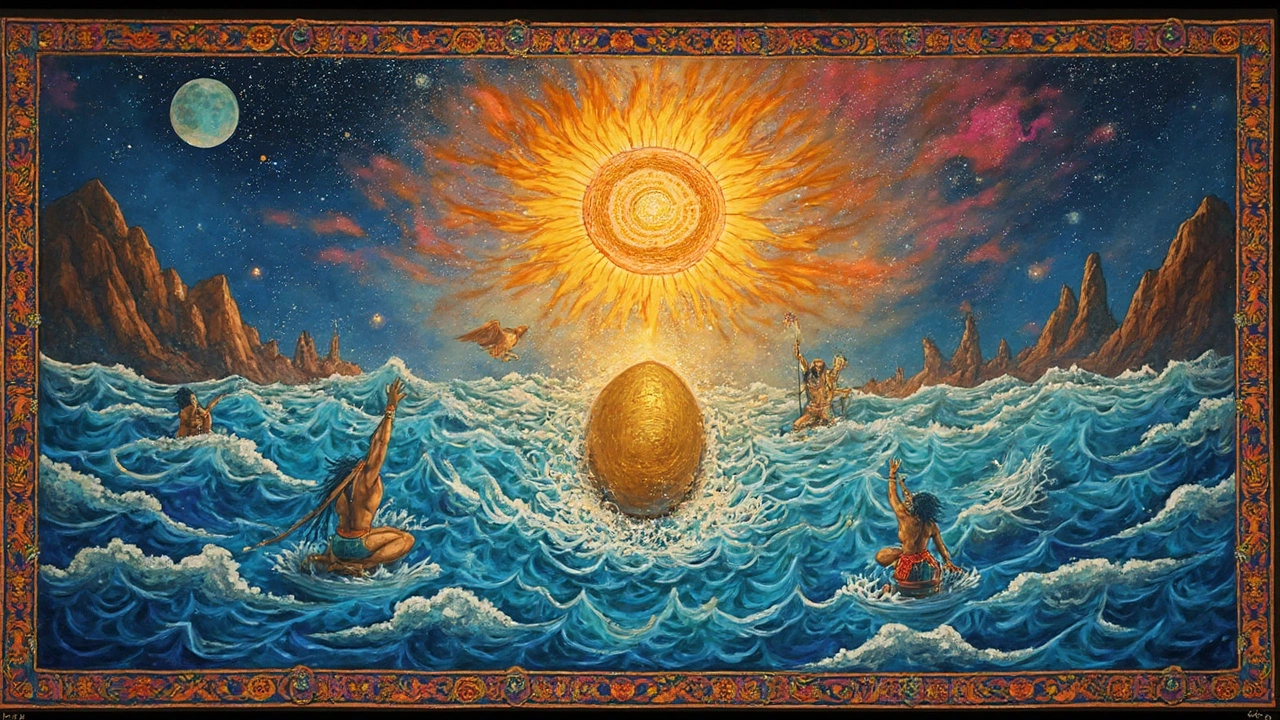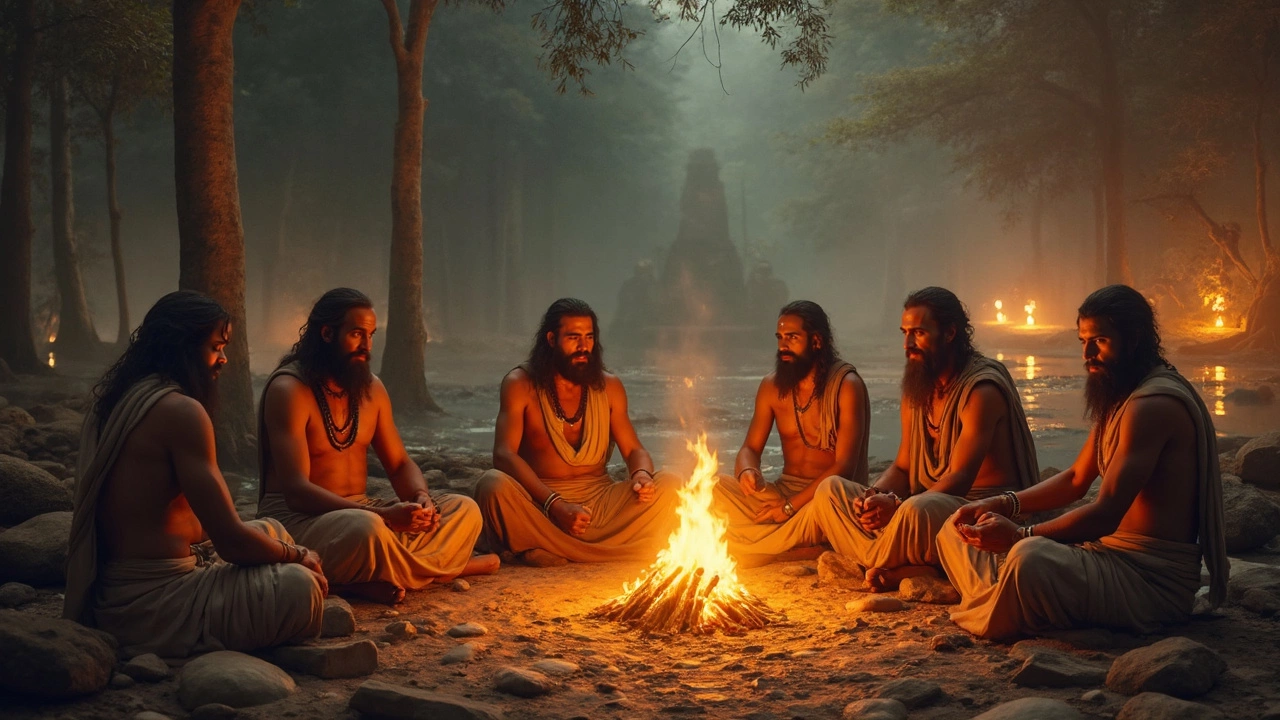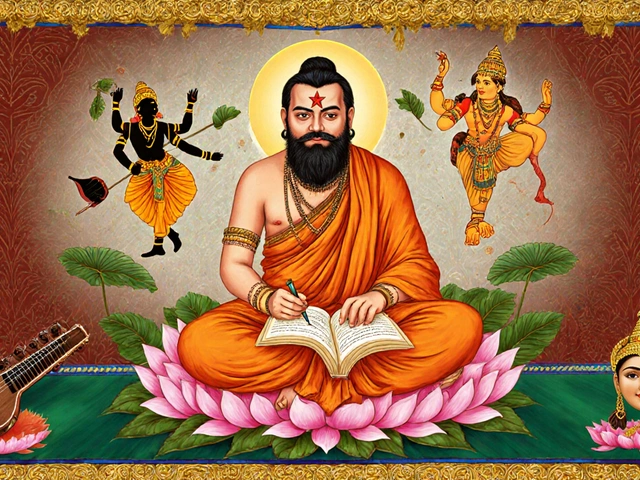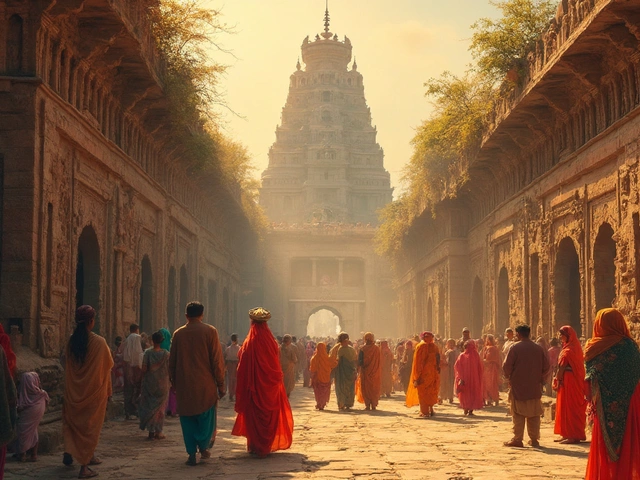Ever wondered what the first Hindu story actually was—like, the original myth that started it all? You're looking at something even older than the epics Ramayana or Mahabharata. Forget temples and rituals for a minute; we're talking about the Rigveda, a collection of hymns and poems from more than 3,000 years ago. It’s the oldest book in the Sanskrit language and the first real source of Hindu mythology. Some think parts of it go back to 1500 BCE or even earlier.
The Rigveda isn’t just a book of religion—it’s got the oldest stories about the universe, mysterious gods, and even the meaning of life. Right at the heart of the Rigveda, there are hymns that try to answer big questions: How did the world start? Where do humans come from? Why do we exist? These questions show up way before Greek or Norse myths were even a thing. That's why the Rigveda is such a big deal in Indian mythology. A lot of folks are surprised that the earliest Hindu stories aren’t about famous gods like Krishna or Shiva, but about way stranger stuff—like cosmic sacrifices and a universe born from nothing.
- Digging into the Rigveda: Where It All Began
- The Creation Hymn: Hinduism’s Oldest Myth
- Gods, Mortals, and Strange Mysteries
- Why This Ancient Story Still Matters
Digging into the Rigveda: Where It All Began
The oldest story of Hinduism isn’t something out of a fairytale—it’s right there in the Rigveda, the oldest known scripture in India. The Rigveda was put together by people living in the northwest part of India and Pakistan, long before the word "Hinduism" even existed. Most experts agree the Rigveda was composed between 1500 and 1200 BCE, but some scholars think parts go back even further.
This text isn’t just religious—it’s pretty much the foundation for everything in later Hindu thinking. It’s made up of 1,028 hymns called "suktas," split into 10 sections known as mandalas. These hymns were first passed down by word of mouth, generation after generation. The people who memorized them were called rishis (basically, ancient sages) and they took that job super seriously—getting a chant wrong was a big no-no.
- The Rigveda is written in ancient Vedic Sanskrit, almost nothing like the Hindi spoken in India today. Reading it is tricky, even for experts.
- Most stories in the Rigveda aren’t about heroes fighting demons, but about natural forces—like the sun, rain, and fire. The deities in these hymns are things people saw and relied on every day.
- Agni (fire), Indra (storm god and king of the gods), and Soma (a mysterious plant and its juice) pop up again and again; they’re the main stars of early Indian mythology.
Here’s a snapshot of what’s inside the Rigveda:
| Feature | Details |
|---|---|
| Date of Origin | c. 1500–1200 BCE |
| Language | Vedic Sanskrit |
| Total Hymns | 1,028 |
| Main Deities | Agni, Indra, Soma |
| Written or Oral? | Passed down orally |
Studying the Rigveda doesn’t just open a window into ancient Indian mythology—it’s like looking at the original code that shaped a whole civilization. People still chant Rigveda verses in Hindu ceremonies today, showing you just how far back its influence goes.
The Creation Hymn: Hinduism’s Oldest Myth
If you want to find the oldest story of Hinduism, look at the Rigveda’s famous “Creation Hymn.” In Sanskrit, it’s called the Nasadiya Sukta (10.129). This hymn digs into how everything began—not by giving clear answers, but by asking a bunch of deep, head-scratching questions about the universe. The wild part? Even the gods don’t seem to know how things started. That’s way different from most religions, where gods usually act like they’ve got all the answers.
The Nasadiya Sukta was probably written around 1200 to 1500 BCE. Twelve lines, that’s it—yet it throws out stuff about darkness, nothingness, and some mysterious “One” that turned into the world. It kinda flips the script, making you think, instead of handing you simple explanations. Here’s what the hymn covers in everyday language:
- At first, there was absolutely nothing. No sky, no earth—not even darkness or light. It’s like before the Big Bang, just blank.
- Something “breathed” by itself in emptiness. The hymn doesn’t say who or what—it leaves that wide open.
- Out of nowhere, creation starts. No details about magic or a god’s plan—just that everything appeared from this big unknown.
- The hymn even says maybe nobody can be sure how or why the world began. Not even the top gods.
This attitude is really rare. Books like the Bible or other ancient myths usually give stories about powerful gods making the world on purpose. But here, the Rigveda’s hymn is like, “Hey, maybe no one knows?”
Today, these lines get used a lot in debates about science and religion. Some people love how the hymn matches up with modern thinking—questioning, not claiming to know it all. Kids across India still study these lines in school. It’s become a big part of what Hinduism means at its most basic level: curiosity about where everything came from.
To get a quick look at what the hymn actually says, here’s a glimpse at a famous English translation:
| Original Line (Sanskrit transliteration) | Simple English Meaning |
|---|---|
| na asat āsīn no sat āsīt tadānīṃ | There was neither existence nor non-existence. |
| kásma dā́nīṃ kúha kásya śárman | Where was the covering, and who was protecting it? |
| ániḷaṃ vā ánilena vā | Was there air, or was there breath? |
| ko addhā veda ka iha pra vocat | Who really knows? Who can say? |
It’s this sense of doubt and wonder that makes the creation myth in the Rigveda totally different from anything else in Indian mythology—and honestly, still way ahead of its time.

Gods, Mortals, and Strange Mysteries
The oldest story of Hinduism isn’t just a simple tale; it’s packed with characters and ideas that sound wild compared to what you hear in modern stories. In the Rigveda, there isn’t just one main god—there are a whole bunch, and their roles can flip depending on the hymn. You’ll read about Indra, who’s all about storms and lightning, and Agni, who literally means ‘fire’ and is one of the most important forces back then. For early Vedic people, Agni wasn’t just a god; he was the way you reached the other gods, like a messenger that carried your prayers upward.
Mortals in these stories aren’t like typical heroes. Most are legendary sages (called rishis), mysterious ancient kings, or sometimes, just regular folk trying to figure out the world. But here’s the twist: often, the line between gods and humans is kind of blurred. Some hymns talk about humans who gain wisdom so deep, it impresses even the gods. Others, like the famous Nasadiya Sukta (the Creation Hymn), wonder if even the gods know how the universe started. Seriously, one line flat-out asks if maybe nobody knows—even the chief god in charge.
Some themes are pretty unusual too. There’s a big focus on sacrifice, but not just animal sacrifice. The gods themselves take part in a cosmic sacrifice called the Purusha Sukta, where a giant divine being is split to form the world. According to this hymn:
- The sky comes from the being’s head.
- The earth comes from the feet.
- The moon comes from the mind.
- Human social groups (like priests, warriors, farmers) are formed from different body parts.
The gods in these Indian mythology stories aren’t all-powerful or perfect. Indra, for example, wins incredible battles but also messes up a lot and even gets scared sometimes. The point is, ancient people saw their gods as complicated—not just flawless superheroes.
One particularly interesting thing: Rigvedic hymns don’t always have clear-cut answers. They’re cool with leaving mysteries unanswered. Why did the universe start? How big is it? Is there just one god behind it all, or is it all connected? These old stories invite you to wonder, not just follow rules.
Why This Ancient Story Still Matters
So, why’s a story from the oldest story of Hinduism—the Rigveda—still talked about today? It’s not just about old gods or weird cosmic mysteries. These tales shaped how millions of people see life, death, and the universe.
The ideas from these early Indian mythology stories still slip into movies, books, and conversations all over India. Think about the creation hymn: it doesn’t give any easy answers. Instead, it admits that some questions might have no answer. Just that one idea is huge. It teaches people to be open to uncertainty and not just settle for simple yes-or-no. That way of thinking shows up in everything from modern philosophy classes to everyday family debates.
You’ll notice even words and phrases from the Rigveda popping up in Indian languages, music, and art. Modern ceremonies—like weddings, housewarmings, and even start-up launches—often include a Vedic chant or two. That’s a direct link from the oldest story of Hinduism right to someone’s living room.
Here’s something else neat: some math and science ideas from ancient India tie back to these hymns. The Vedic people came up with complex number systems, and their stories about order and chaos sneak into everything from yoga to meditation apps.
- The Rigvedic questions inspired India’s knack for curiosity and problem-solving.
- Most old South Asian customs—think big festivals like Diwali—keep elements of Rigvedic myth going strong.
- Even new religions and philosophy schools in India, like Buddhism and Jainism, took cues from these original questions and stories.
And for the practical-minded, it’s also about identity. Many Indian families see their own history as going back to these ancient storytellers. So, the oldest story of Hinduism is way more than dusty legend—it's alive in culture, science, and the way people think.





